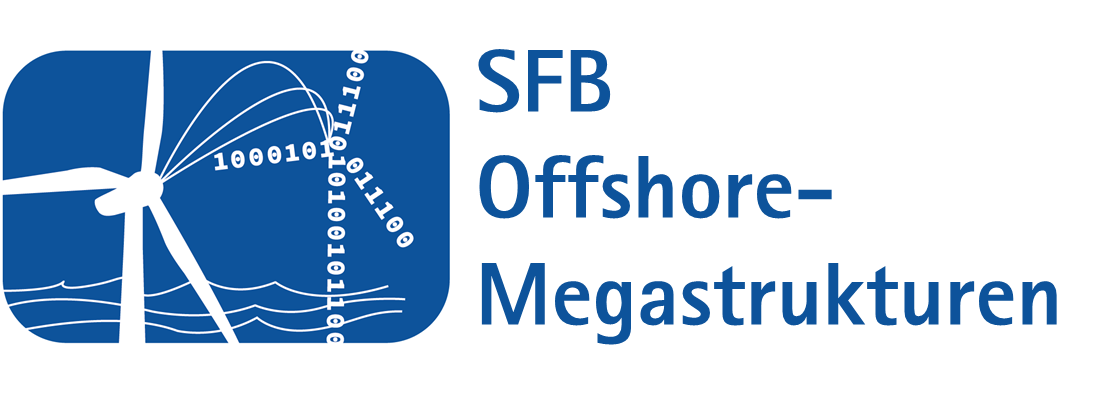Despite the steadily increasing computing power and storage capacity of (super-)computers, simulations of large mechanical structures are relatively complex and require many resources. The central aim of the Collaborative Research Centre is an almost real-time capable dynamic simulation of offshore wind turbines (OWTs) with the digital twin. For this purpose, we are developing mathematical methods that exploit the mechanical structure of the OWT in order to keep the required computational steps and the required memory as low as possible. Our work hypothesis is:
Coordinated mathematical approaches and numerical techniques from the fields of multi-body simulation, optimisation, saddle point systems, Newton methods and model reduction will contribute significantly to achieving the required numerical efficiency and robustness in the digital twin.
The core of the model is the mechanical megastructure, which interacts with the environment (soil, wind, waves). Due to the immense simulation effort, both the flexible components of the mechanical megastructure and the effects of the environment must be represented by reduced or simplified models. These are then integrated into the digital twin. Despite the combination of independently simplified partial models, the resulting model must represent the essential physical properties of the WTG qualitatively correctly and with sufficient accuracy to obtain practically usable simulation results. In addition, the numerical simulation method must be robust and highly efficient.
The essential scientific innovation of SP B05 consists, on the one hand, in the analytical and numerical research of the linear principal component analysis (PCA) and the nonlinear principal geodesic analysis (PGA) with respect to the structure conservation for flexible mechanical multibody systems as well as the subsequent coupling with the reduced partial models for wind and waves, and, on the other hand, in the development of coordinated linear and nonlinear solution algorithms for the implicit time step based on the analytical and algebraic structure of the equation systems. SP B05 is in close exchange with the central project (SP Z01) in order to integrate the structure-specific algorithms into the digital twin and thus guarantee real-time capability. We are also available to the central project in an advisory capacity regarding the underlying numerics.
Subproject Management
30167 Hannover
Staff
30167 Hannover












